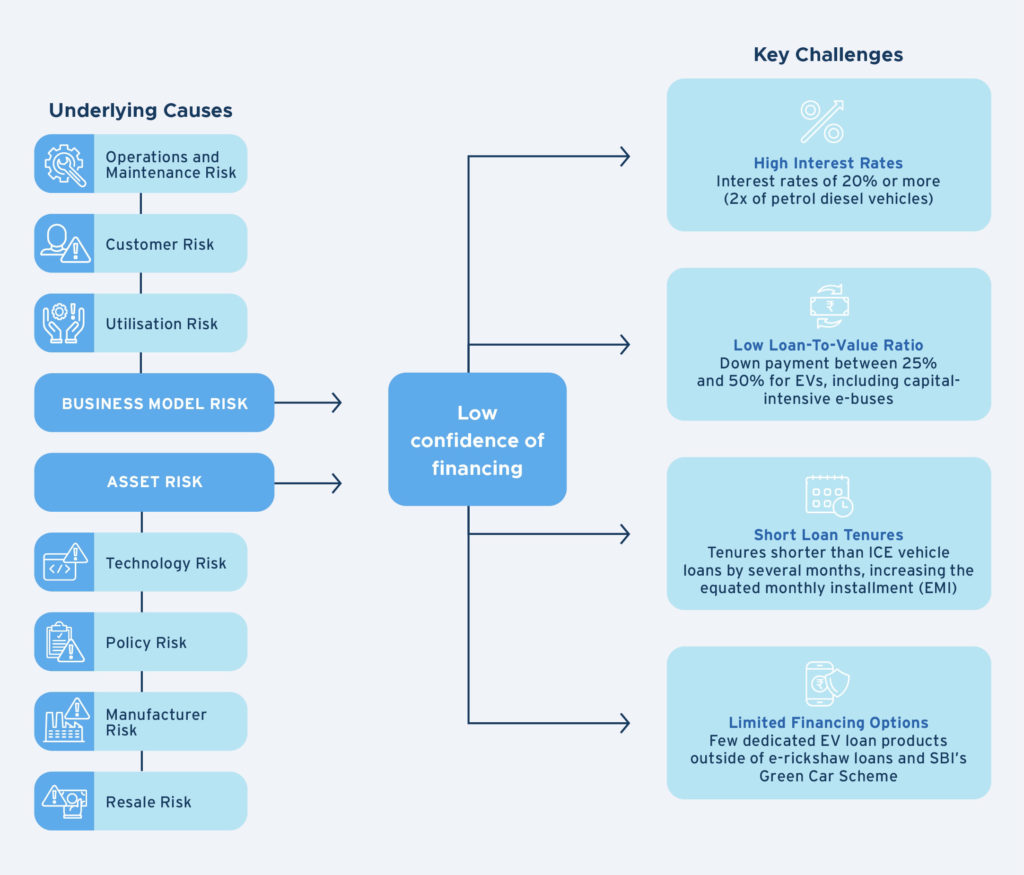
Report | 2022
Banking on Electric Vehicles in India
A Blueprint for Inclusion of EVs in Priority Sector Lending Guidelines
Cumulative investment in India’s electric vehicle (EV) transition could be as large as INR 19.7 lakh crore ($US266 billion) between 2020 and 2030. Although public and private sector initiatives are accelerating capital deployment to meet this potential, retail lending to support the financing of EVs has been slow to pick up.
Banks and non-banking finance companies (NBFCs) currently hesitate to lend for EVs due to perceived and real asset and business model risks. As a result, if financing is available, EV buyers are unable to obtain interest rates and tenures that are comparable to internal combustion engine vehicles. This has created the need for a regulatory measure that can mainstream financing of EVs.

The Reserve Bank of India’s Priority Sector Lending (PSL) guidelines require scheduled banks to allocate 40 percent of their total credit to sectors of national priority. Including EVs as a priority sector has the potential to enhance financing for credit-deficient segments and use cases and institutionalize EVs in India’s financial system.
NITI Aayog is working with the Reserve Bank of India to operationalize the inclusion of EVs as a priority sector. There is also a need to engage other ministries, financial institutions, and the EV industry in the design of the guidelines. This report is intended to support ongoing and future deliberations on consideration of priority sector status for EVs and the design of guidelines for EVs. The report provides:
- Context on the structure, mechanics, and history of PSL
- Considerations and recommendations to inform the inclusion of EVs in the PSL guidelines
- Actions needed to implement and ensure success of EVs as a priority sector